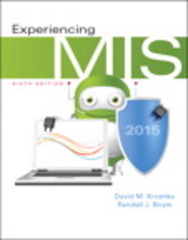Question
1.The purpose of this assignment is to respond to a Request for Proposal (RFP) from my organizations called AnyCo. AnyCo is a theoretical name to
1.The purpose of this assignment is to respond to a Request for Proposal (RFP) from my organizations called "AnyCo". AnyCo is a theoretical name to represent most organizations that produces products and services for the Edmonton Market. Due to high inflation, high interest rates, supply chain shortages, AnyCo is struggling in this tough Alberta economy and therefore is looking for your help to make it more adaptable, flexible, and innovative, so it can deliver competitively better, faster, cost-effective products and services. Chapter 6, Navigating Organizational Politics and Culture, goes into depth about how organizational policies and culture, which are the most powerful but informal, non-written parts of any group, work. The section underlines the idea that change leaders should be guided by the factors pertinent to culture and power relations because these member are at the heart of the success of any change project. Through an understanding of the interwoven cultural as well as the power dynamics within an organization, the change leaders can better deal with such complexities. Therefore, indirectly they will have more progress in the organizational change. Besides that, two of the most frequently used tools are brought into practice, Force Field Analysis and Stakeholder Analysis, all of which are indispensable to study the informal organization systems and the ways to change it. Force Field Analysis is a technique that identifies the driving and the restricting forces of change which are affected by a model of strategy in order to shape the work of the change leaders. However, Stakeholder Analysis can further play a role in the identification, assessment and establishment of the motives, power bases, alliances, and targets of relevant stakeholders that are critical in providing insight on their impact and inclination towards collaboration or adversity. The section further elaborates on changes leaders' self-awareness and being able to discern their roles as stakeholders and involved persons in the change process. Changes leaders need to be aware of what is their source of power and how they can harness it skillfully to conduct their change programs. Recognizing themselves as change agents, the leaders will put themselves in a more favorable political and cultural environment, will gain support of the key stakeholders, and will be able to keep the resistance to change at bay. In a nutshell, the Chapter provides the detailed picture on how the politics and the culture of an organization can be managed by the change leaders. Applying tools like the Force Field Analysis and Stakeholder Analysis for facilitating self-awareness will enable change leaders to build their skills in the areas of leading successful organizational change projects in spite of the complexities of organizational dance.
Explanation:
Chapter 6 of "Organizational Change: The "Action-Oriented Toolkit" focuses on dealing with the non-formal dimensions of an organization such as its culture and power structures. These casual factors can greatly influence how people act and take decisions in an organization. The chapter largely stresses on not ignoring the informal aspects, specifically for leaders who aim at bringing about changes in their enterprises. The major message of the chapter is that organizational culture and power dynamics function as the key factors governing the progress or obstruction of change. This section addresses the instruments, such as Force Field Analysis and Stakeholder Analysis, which help leaders to identify drivers as well as barriers to change. Chapter examples demonstrate how these factors influence change in organizations. Furthermore, the chapter gives one the understanding of how to deal with them effectively. In the end, the chapter teaches us that comprehension and handling organizational politics and culture gives leaders more chances of achieving success for their change initiatives. It highlights the importance of self-awareness for leaders as well as the usefulness of analytic instruments in terms of figuring out impediments, and winning the support of key stakeholders. Eventually, it is a practical tool that leaders can use for leading their organizations successfully through change. ^ How do I respond to question 1 with the information above. Need help answering the question in bold with the above information.
Step by Step Solution
There are 3 Steps involved in it
Step: 1

Get Instant Access to Expert-Tailored Solutions
See step-by-step solutions with expert insights and AI powered tools for academic success
Step: 2

Step: 3

Ace Your Homework with AI
Get the answers you need in no time with our AI-driven, step-by-step assistance
Get Started


